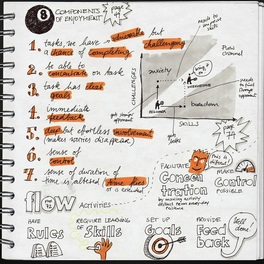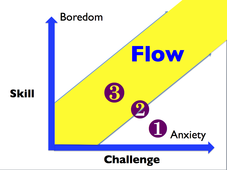- Home
- Awe (NEW 7/24)
- This ain't "happy-ology"...
- Philippiness 2/23 Science of Happiness - Class & Life
- SofH - class & life Spring 2022
- NEW - Time Confetti
- NEW - Happiness Hacks
- NEW - The Power of Fun
- Getting started
- Introducing happiness
- Main Activity Download Center
- 10 Minutes for Happiness (quick tasks)
- Happiness Haiku (consolidation)
- Positive brain chemicals
- New! 3 minutes for positivity
- Becoming Friends
- Savoring
- 5 photos (A savoring task with student projects)
- Flourishing
- Flow
- Positivity
- Laughter
- Meditation
- Mindfulness for kids
- Balloon toss (icebreakers)
- Song/lip dub (Marc's Ss): Pharrell William's HAPPY
- Activities from other teachers
- Don't laugh at me
- Videos of Marc's Talks
- Posters
- Bookshelf (NEW books listed)
- Links
- NUFS MA TESOL task page
- English Firsthand syllabus tie-in
- Monk for a Month (mindfulness)
- Misc PowerPoint downloads
- Contact Marc
- .
- InnovationsPosPsych downloads
- Positive Psychology in SLA (book)
- ..
- NEW BOOK
- test page
- songs for distance teaching
Flow

Flow, to use Mihaly Csikszentmihalyi's term, is when you are totally focussed and in the moment. You are challenged but successful. Time seems to disappear. Think of a time when you were teaching. Perhaps you and the students were doing something new (so it was challenging) but everything was going great. And all of a sudden, you realized the class is over. Time's up and you hadn't noticed. That's flow.
Athletes refer to being "in the zone." That's flow.
Here is a short video (2:41) of Csikszentmihalyi explaining the key elements of flow.
Dr. Csikszentmihalyi's accent can be challenging, especially for non-native speakers. If you are using this video with your students, you might want to give them THIS OUTLINE.
Here's a newscast (3:49) explaining the concept of flow.
As teachers, we need to keep in mind the balance of challenge and skill.
Athletes refer to being "in the zone." That's flow.
Here is a short video (2:41) of Csikszentmihalyi explaining the key elements of flow.
Dr. Csikszentmihalyi's accent can be challenging, especially for non-native speakers. If you are using this video with your students, you might want to give them THIS OUTLINE.
Here's a newscast (3:49) explaining the concept of flow.
As teachers, we need to keep in mind the balance of challenge and skill.
How do you get to flow?

Artist Eva Lotta drew this wonderful "sketchnote" explaining flow. (Used here with Creative Commons Attribution). Click to make it larger.
The flickr site for this image is here and Ms. Lotta's website is at http://www.evalotta.net/sketchnotes/
The flickr site for this image is here and Ms. Lotta's website is at http://www.evalotta.net/sketchnotes/
4-3-2

Dr. Bill Snyder, Teachers College Columbia University MA TESOL program - Japan, points out that for EFL students, the English classes may not be the ideas "flow situation." Students who love English would probably rather be in an more intensive English environment. Students who aren't crazy about English aren't likely to achieve flow. But, he says, certain activities are likely to help some of the learners experience flow, at least during that activity.
One well-known activity that does this is "4-3-2." (see the 2nd page of the article at this link for a longer activity description)
Students choose their speaking topic. After a minute or two of "thinking time", the activity starts:
Speaker A talks to Speaker B for 4 minutes, then they change roles.
Next Speaker A talks to Speaker C for 3 minutes, trying to say the same amount. Again, they change roles.
Finally, Speaker A talks to Speaker D for 2 minutes, and they change.
Each time, the speakers are getting more skillful. At the same time, the time pressure adds an extra challenge. In practice, students sometimes report not really focussing on language by the third time. They are thinking in English.
Here is an activity I sometimes use called, "I felt wonderful". Speakers describe a positive experience. Partners follow up with WH questions. They do this with 3 different partners as described. About 87% of my own students report re-experiencing the positive emotion for the original event.
The article One more time with feeling describes several other "fluency frames" -- activity models that involve the speakers recycling language, similar to 4-3-2. (which, by the way, is also knows as "carousel" and "fluency workshop.")
An interesting short article about how to Make it difficult, not punishing deals with flow in gaming, but the idea of adjusting the level of difficulty is one all teachers deal with. (Thanks to Bill Snyder for this).
One well-known activity that does this is "4-3-2." (see the 2nd page of the article at this link for a longer activity description)
Students choose their speaking topic. After a minute or two of "thinking time", the activity starts:
Speaker A talks to Speaker B for 4 minutes, then they change roles.
Next Speaker A talks to Speaker C for 3 minutes, trying to say the same amount. Again, they change roles.
Finally, Speaker A talks to Speaker D for 2 minutes, and they change.
Each time, the speakers are getting more skillful. At the same time, the time pressure adds an extra challenge. In practice, students sometimes report not really focussing on language by the third time. They are thinking in English.
Here is an activity I sometimes use called, "I felt wonderful". Speakers describe a positive experience. Partners follow up with WH questions. They do this with 3 different partners as described. About 87% of my own students report re-experiencing the positive emotion for the original event.
The article One more time with feeling describes several other "fluency frames" -- activity models that involve the speakers recycling language, similar to 4-3-2. (which, by the way, is also knows as "carousel" and "fluency workshop.")
An interesting short article about how to Make it difficult, not punishing deals with flow in gaming, but the idea of adjusting the level of difficulty is one all teachers deal with. (Thanks to Bill Snyder for this).